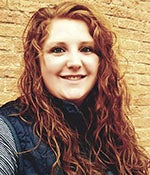Guest Column: How can we build more bridges in Albert Lea?
Published 12:41 am Saturday, September 2, 2017
Live United by Lana Howe
Living in a small town in southern Minnesota, people tend to wear many different hats. I am no different. I am coordinator for Freeborn County Family Services Collaborative. In and of itself I wear many different hats through this role. I also coach softball at the high school, sing in our community choir Cantori and serve as a board member for the Parenting Resource Center-Mower and Freeborn County. I like to geek out on brain science and social science as well as adverse childhood experiences, but I also love topics regarding sustainability and community! I often post on Facebook and share/blog about the many events happening in and around town that highlight sustainability and indeed, community.
In my mind, these are all connected. All of these things address aspects of resiliency. When times are hard, how well do we handle it? How resilient are we?

Lana Howe
A dear friend of mine has pointed out and shared some wise words that have followed with me during this time where I ponder over community and reflect on my recent feature in the Albert Lea magazine “Why I love this Community” what it is that connects to me above others around me. I thought I better elaborate on the topic.
So what my friend shared with me was that whether we are working with students or farmers or health professionals, all these hats work on the same core topic: social capital.
You see, social capital is measured by connections. How connected is our community? These connections aren’t just feel good concepts of how at home you feel in your community; they are proven to determine a community’s ability to deal with disaster. Just Google Dr. Daniel Aldrich and you will find tons of information with headings like, “Social capital in post-disaster recovery” and “Building a culture of resilience in post-disaster recovery.”
OK, so that’s not super exciting reading, so let me sum it up for you. Dr. Aldrich has studied disasters all over the world from Hurricane Katrina to the Japanese tsunami. What was one of the best indicators as to how fast a neighborhood/community recovered from these disasters? How many solar panels they had? How much local food production they had?
The crime rate.
Communities with high crime rates have citizens who are afraid, right? Afraid of strangers, afraid to reach out, distrusting of each other. Every man for himself. Those communities suffered more deaths during the disaster and took longer to rebuild after the disaster. They were notably less resilient.
It’s all about social capital. If you know your neighbors and disaster strikes, you will help them get out. Less deaths. If you know your neighbors, you can work together with them to rebuild when you come back. Quicker rebuild. You are a more resilient community.
Notice I use the word “neighbor,” not the word “friend.”
We often have a network of friends we can rely on. I have friends in different states, right here in town, up North, and all over. This is a level of social capital within networks. It is wonderful, supportive and important. We love these friends and they help us get through hard times.
But another kind of social capital that Dr. Aldrich is measuring is “bridging networks.” He is describing the kind of networks that bridge or connect all our networks together. These may not be our friends, but they are people we meet in groups like the PTA or a sports club or neighborhood picnic. These connections bridge these like-minded friend groups and connect us to other, broader groups with different opinions, customs, cultures and backgrounds.
These bridges are important social capital too. These groups test our compassion for others. We may get thrown into interactions that make us uncomfortable. We may have to deal with people who don’t agree with us or really even understand us.
This is a true test for community. How resilient are we? How compassionate are we to those in groups outside our tight friend circles? When disaster strikes, you don’t know who you will be standing next to. We need to be able to reach out a hand in any and all directions. That is what makes a truly healthy and strong community.
I love lively discussion with both sides represented, it’s what makes us stronger — smarter — and distribute our sense of belonging. But in consideration of our community’s social capital, I measure the success of the deliberation by whether or not people can still get along after the dispute has closed. The recent post we read on Facebook, articles in media and conversations heard on the street show that deliberation is still quite alive in our community, but do we burn or build bridges with it?
How do we maintain compassion for each other, whether we agree or not? We need to figure this out. This level of social capital can be studied and reviewed as much as Dr. Aldrich wants, but science doesn’t tell us how to be loving, how to be considerate, how to be open-minded. His science merely shows us that we can literally die if we don’t do it.
We are a wonderful community. But, may we build more bridges?
Lana Howe is the facilitator for Freeborn County Family Services Collaborative.

